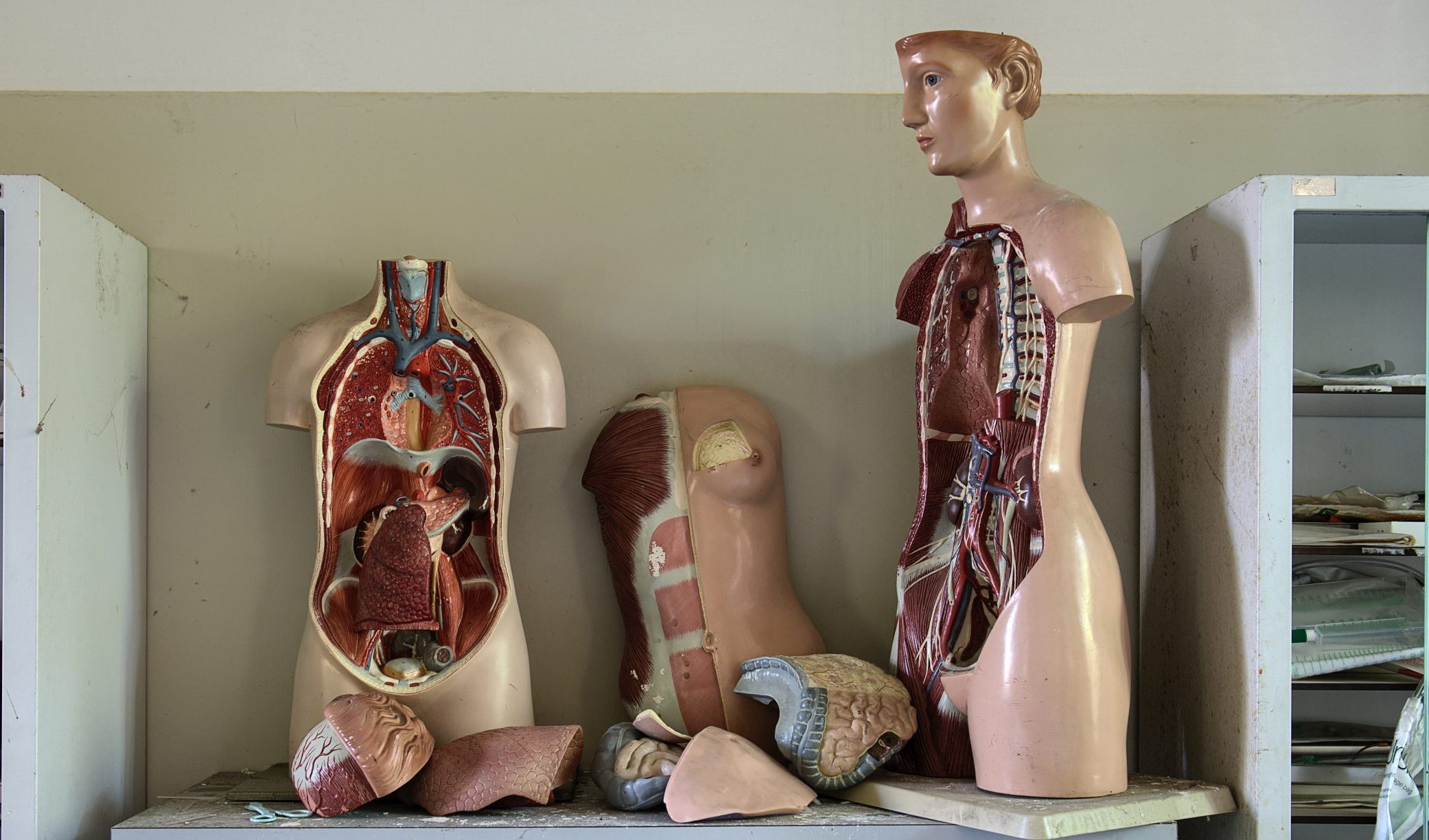Jeremy Howick is Professor of Empathic Healthcare and Director of the Stoneygate Centre for Empathic Healthcare
Andy Ward is Associate Professor of Medical Education at theUniversity of Leicester
Andrew Papanikitas is Deputy Editor of the BJGP and an Hon Tutor in General Practice at the University of Oxford
Enhanced empathy is a professional virtue recognised by the General Medical Council.1 It can lower patient pain while raising patient satisfaction.2 It can reduce practitioner burnout.3 The absence of empathy increases medico-legal risk and reduces patient safety.4 The Ockenden, Kirkup, and Francis reports into the avoidable deaths at three NHS hospitals all cite lack of empathy as one of the causes of the tragedies.5,6 7The Francis report concluded that a contributing cause of the hundreds of unnecessary deaths was “an attitude which would be unlikely to be persisted in if those adopting it were constantly to place an empathy for the predicament of patients at the forefront of their mind.”7
The good news is that there are at least ten evidence-based ways to enhance empathy.
Yet, the extent to which patients report that their practitioners are empathic varies.8 A reason for the variation is the perception that empathic care takes more time than busy healthcare practitioners have to spare.9 The good news is that there are at least ten evidence-based ways to enhance empathy. These take little time and can pay back the moments invested (sometimes with compound interest).
- Greet patients in the waiting room instead of having a receptionist or an electronic noticeboard summon them to your office. Observing how well they rise, walk, breathe, and navigate the corridor is valuable diagnostic information. It is also good for you to get up and move (if you are able to).10
- Introduce yourself by name. Patients prefer this, and it will make them more satisfied with your care.11
- In situations such as home visits or care-home rounds, sit beside the patient instead of standing up. Practitioners who sit down with patients are perceived to spend more time with their patients,12 while improving communication and patient satisfaction.13
- Look at the patient when talking with them rather than a computer screen or notes.14
- Use facial expressions or other non-verbal communication that mirror the patients’, where appropriate, to show that you understand and build connection.15
- Don’t interrupt the patient. Paradoxically, not interrupting the patient can reduce the overall consultation length while providing patients with the opportunity to express their concerns.16 A leading GP and chair of NICE, David Haslam famously taught this idea as ‘Shut up and listen!’17
- Go beyond objective observation to be genuinely curious about the patient. Curiosity improves diagnostic accuracy, especially with complex patients.18
- Consciously use body language: Use back-channelling to show you are listening actively (say ‘hmm’, ‘ahh’). If done sincerely (you need to actually be listening to the patient!) this will demonstrate that you understand and are listening. Have physically engaging body language such as a slight lean forward, or appropriate physical contact.19 Express concern with your tone of voice (as opposed to dominance or anxiety); concerned tones are associated with lower rates of malpractice suits.20
- Give a truthful, positive message of hope, even if it is just, “We are going to do our best to take care of you.” Positive messages can reduce patient pain.1
- Take care of yourself. Being a healthcare practitioner is inherently difficult and stressful. Taking a deep breath before starting any new task can make a small positive difference.21
These tools take little or no training or time to adopt so remove barriers to implementing empathic care within clinical practice.
DOI: Andrew Papanikitas attended the Stoneygate Centre for Empathic Healthcare on a visiting fellowship in October 2023. He is also deputy editor and has written about the experience here: https://bjgplife.com/bjgplife-on-tour-find-us-in-the-crowd-at-rcgp-annual-conference-2023/
References
- Communication and interpersonal skills. General Medical Council. Accessed 3 April, 2018. https://www.gmc-uk.org/education/postgraduate/30972.asp
- Howick J, Moscrop A, Mebius A, et al. Effects of empathic and positive communication in healthcare consultations: a systematic review and meta-analysis. Journal of the Royal Society of Medicine. 2018;111(7):240-252. doi:10.1177/0141076818769477
- Thirioux B, Birault F, Jaafari N. Empathy Is a Protective Factor of Burnout in Physicians: New Neuro-Phenomenological Hypotheses Regarding Empathy and Sympathy in Care Relationship. Frontiers in Psychology. May 26 2016;7doi:10.3389/Fpsyg.2016.00763
- Street RL, Jr., Petrocelli JV, Amroze A, et al. How Communication “Failed” or “Saved the Day”: Counterfactual Accounts of Medical Errors. J Patient Exp. Dec 2020;7(6):1247-1254. doi:10.1177/2374373520925270
- Ockenden D. Ockendend Report: Findings, Conclusions and Essential Actions From the Independent Review of Maternity Services at the Shrewsbury and Telford Hospital NHS Trust. 2022. https://assets.publishing.service.gov.uk/government/uploads/system/uploads/attachment_data/file/1064302/Final-Ockenden-Report-web-accessible.pdf
- Maternity and neonatal services in East Kent: ‘Reading the signals’ report (GOV.UK) (2022).
- Francis R. Report of the Mid Staffordshire NHS Foundation Trust Public Inquiry. 2013. https://assets.publishing.service.gov.uk/government/uploads/system/uploads/attachment_data/file/279115/0898_i.pdf
- Howick J, Steinkopf L, Ulyte A, Roberts N, Meissner K. How empathic is your healthcare practitioner? A systematic review and meta-analysis of patient surveys. BMC Med Educ. Aug 21 2017;17(1):136. doi:10.1186/s12909-017-0967-3
- Morse DS, Edwardsen EA, Gordon HS. Missed opportunities for interval empathy in lung cancer communication. Arch Intern Med. Sep 22 2008;168(17):1853-8. doi:10.1001/archinte.168.17.1853
- Wilkinson M. Consultations start in the waiting room. Br J Gen Pract. Jan 2018;68(666):28. doi:10.3399/bjgp17X694205
- Makoul G, Zick A, Green M. An evidence-based perspective on greetings in medical encounters. Arch Intern Med. Jun 11 2007;167(11):1172-6. doi:10.1001/archinte.167.11.1172
- Lidgett CD. Improving the patient experience through a commit to sit service excellence initiative. Patient Experience Journal. 2016;3(2):67-72.
- Iyer R, Park D, Kim J, Newman C, Young A, Sumarsono A. Effect of chair placement on physicians’ behavior and patients’ satisfaction: randomized deception trial. BMJ. Dec 15 2023;383:e076309. doi:10.1136/bmj-2023-076309
- Kraft-Todd GT, Reinero DA, Kelley JM, Heberlein AS, Baer L, Riess H. Empathic nonverbal behavior increases ratings of both warmth and competence in a medical context. PLoS One. 2017;12(5):e0177758. doi:10.1371/journal.pone.0177758
- Carr L, Iacoboni M, Dubeau MC, Mazziotta JC, Lenzi GL. Neural mechanisms of empathy in humans: a relay from neural systems for imitation to limbic areas. Proc Natl Acad Sci U S A. Apr 29 2003;100(9):5497-502. doi:10.1073/pnas.0935845100
- Rabinowitz I, Luzzati R, Tamir A, Reis S. Length of patient’s monologue, rate of completion, and relation to other components of the clinical encounter: observational intervention study in primary care. BMJ. Feb 28 2004;328(7438):501-2. doi:10.1136/bmj.328.7438.501
- Marsden J (Feb26, 2019) BJGP long read: how to enjoy your consultations. BJGP Life, https://bjgplife.com/bjgp-long-read-how-to-enjoy-your-consultations (accessed 2 Jan 2024).
- Halpern J. From detached concern to empathy : humanizing medical practice. Oxford University Press; 2011.
- Little P, White P, Kelly J, Everitt H, Mercer S. Randomised controlled trial of a brief intervention targeting predominantly non-verbal communication in general practice consultations. British Journal of General Practice. Jun 2015;65(635):e351-6. doi:10.3399/bjgp15X685237
- Ambady N, Laplante D, Nguyen T, Rosenthal R, Chaumeton N, Levinson W. Surgeons’ tone of voice: a clue to malpractice history. Surgery. Jul 2002;132(1):5-9. doi:10.1067/msy.2002.124733
- Rasanathan JJK, Nolan T. A “Deep Breath In” for GPs. BMJ. 2020;369:m1437. doi:https://bjgplife.com/bjgp-long-read-how-to-enjoy-your-consultations
Featured photo by Tim Marshall on Unsplash












I wholeheartedly agree with the authors that more empathy in the consultation is desirable, does not necessarily need more appointment time and would be beneficial to both patients and doctors.
Being curious about our patients is the golden thread running throughout our work that facilitates that. When interest in people and curiosity about their lives are real, most of the other things like facing the patient, concentrating on them while they are talking etc, will come naturally to many doctors. The 10-point list is a good summary of the steps we can take towards demonstrating empathy.
I strongly believe that in order to project real empathy, doctors need to feel appreciated and supported themselves (by colleagues, managers, politicians, the media – generally the whole of society). We cannot just look after ourselves, we need others to take care of us, too.
Only doctors who feel well enough in themselves can be truly empathetic with their patients. When circumstances are conspiring against that, this list can be a helpful reminder of how to ‘do’ empathy.
A brilliant (and evidence referenced) list that should be available to all doctors!